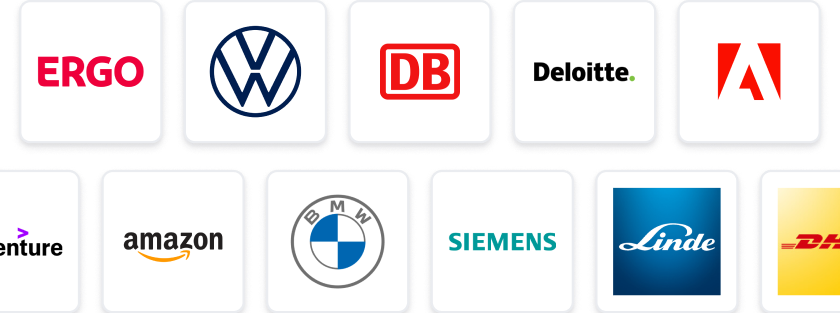At a Glance
- Tasks: Support structural and occupant injury simulation for seating products.
- Company: Join Safran Engineering Services, a leader in aerospace engineering.
- Benefits: Enjoy hybrid working, generous holiday, and a personal pension scheme.
- Why this job: Be part of a dynamic team focused on safety and innovation in aerospace.
- Qualifications: Experience in stress engineering and proficiency in relevant software required.
- Other info: Opportunity for career development and training within the Safran Group.
The predicted salary is between 36000 - 60000 £ per year.
Safran Engineering Services is looking for a Stress Engineer to join our team at our customer in Cwmbran
The job involves analytical support in structural and occupant injury simulation, working closely with other functions such as Design, Certification and Production to ensure that seating products are lightweight, durable and safe throughout their working life.
The role will be based in the Cwmbran area, and will be a combination of working from home and working at the customer site. Expected 3 days on site, 2 days at home.
Requirements
We need an experienced stress engineer with the following skillsets:
- Part and assembly meshing, model setup and analysis in Altair Hyperworks (Hypermesh, Optistruct, Hyperview) and MSC Nastran;
- Linear/non-linear implicit FE analysis;
- FE checking and validation;
- Use, authoring and checking of aerospace standard classical calculations;
- English language technical report writing & presentation skills;
- Technical, direct communication with internal departments such as Design, Certification, and Production
Desirable:
- Multi-body dynamic analysis and/or non-linear explicit FE analysis (Radioss);
- Knowledge of fatigue and damage tolerance;
- Experience with aircraft seat structures;
- Occupant injury criteria
Good understanding of:
- Loading requirements, limit and ultimate, dynamic and static occupant injury requirements;
- Metallic, non-metallic and composite materials and their behaviour;
- Weight requirements and identification of surplus material – weight optimisation;
- Damage mechanisms including plasticity and instability, and imperfections in production and build quality;
- Aerospace regulations FAR/CS 25-561, EASA Part 21 J, ARP 5526 and airframer specifications
Benefits
- 185 hours holiday per year plus statutory bank holidays
- Personal pension scheme whereby 5% contribution from employee and 8% from employer plus salary sacrifice
- Death in service life insurance – covering up to 4x annual basic salary in the event of death in service
- PEGI Share Scheme
- Career development within Safran Group
- Training & development are a focus
- Hybrid working available
- Early finish on a Friday
#J-18808-Ljbffr
Stress Engineer employer: Safran Engineering Services
Contact Detail:
Safran Engineering Services Recruiting Team
StudySmarter Expert Advice 🤫
We think this is how you could land Stress Engineer
✨Tip Number 1
Familiarise yourself with the specific software mentioned in the job description, such as Altair Hyperworks and MSC Nastran. Having hands-on experience or even completing online tutorials can give you a significant edge during interviews.
✨Tip Number 2
Network with professionals in the aerospace industry, particularly those who work in stress engineering. Attend relevant webinars or local meetups to make connections that could lead to referrals or insider information about the role.
✨Tip Number 3
Brush up on your knowledge of aerospace regulations and standards mentioned in the job description. Being able to discuss these confidently will demonstrate your commitment and understanding of the industry.
✨Tip Number 4
Prepare to discuss your previous experiences with structural analysis and occupant injury criteria in detail. Be ready to provide examples of how you've applied your skills in real-world scenarios, as this will showcase your practical knowledge.
We think you need these skills to ace Stress Engineer
Some tips for your application 🫡
Tailor Your CV: Make sure your CV highlights relevant experience and skills that match the requirements for the Stress Engineer position. Focus on your expertise in Altair Hyperworks, MSC Nastran, and any experience with aircraft seat structures.
Craft a Compelling Cover Letter: Write a cover letter that showcases your passion for engineering and your understanding of the aerospace industry. Mention specific projects or experiences that demonstrate your analytical skills and ability to work collaboratively with design and production teams.
Highlight Technical Skills: In your application, emphasise your technical skills such as FE analysis, report writing, and communication abilities. Provide examples of how you've successfully applied these skills in previous roles.
Proofread Your Application: Before submitting, carefully proofread your CV and cover letter for any spelling or grammatical errors. A polished application reflects your attention to detail, which is crucial for a Stress Engineer role.
How to prepare for a job interview at Safran Engineering Services
✨Showcase Your Technical Skills
Make sure to highlight your experience with Altair Hyperworks and MSC Nastran during the interview. Be prepared to discuss specific projects where you applied linear and non-linear FE analysis, as this will demonstrate your technical proficiency.
✨Understand the Role's Requirements
Familiarise yourself with the key responsibilities of a Stress Engineer, especially in relation to occupant injury simulation and structural analysis. This knowledge will help you answer questions more effectively and show that you're genuinely interested in the role.
✨Prepare for Technical Questions
Expect to face technical questions related to aerospace regulations and material behaviour. Brush up on topics like loading requirements and damage mechanisms, as these are crucial for the role and will likely come up during the interview.
✨Demonstrate Communication Skills
Since the role involves collaboration with various departments, be ready to discuss how you've effectively communicated technical information in the past. Share examples of how you've worked with design, certification, or production teams to solve problems.
